Heading north for the dry season? Here’s what you need to know
Tropical cyclones and record rainfall during this year’s wet season in northern Australia resulted in significant flooding in some areas with damage to roads and infrastructure.
With the dry season rolling in, travellers are preparing to head north for winter, so we look at some of the popular destinations for tourists and adventurers and see how they’re faring after one of the wettest wet seasons on record.
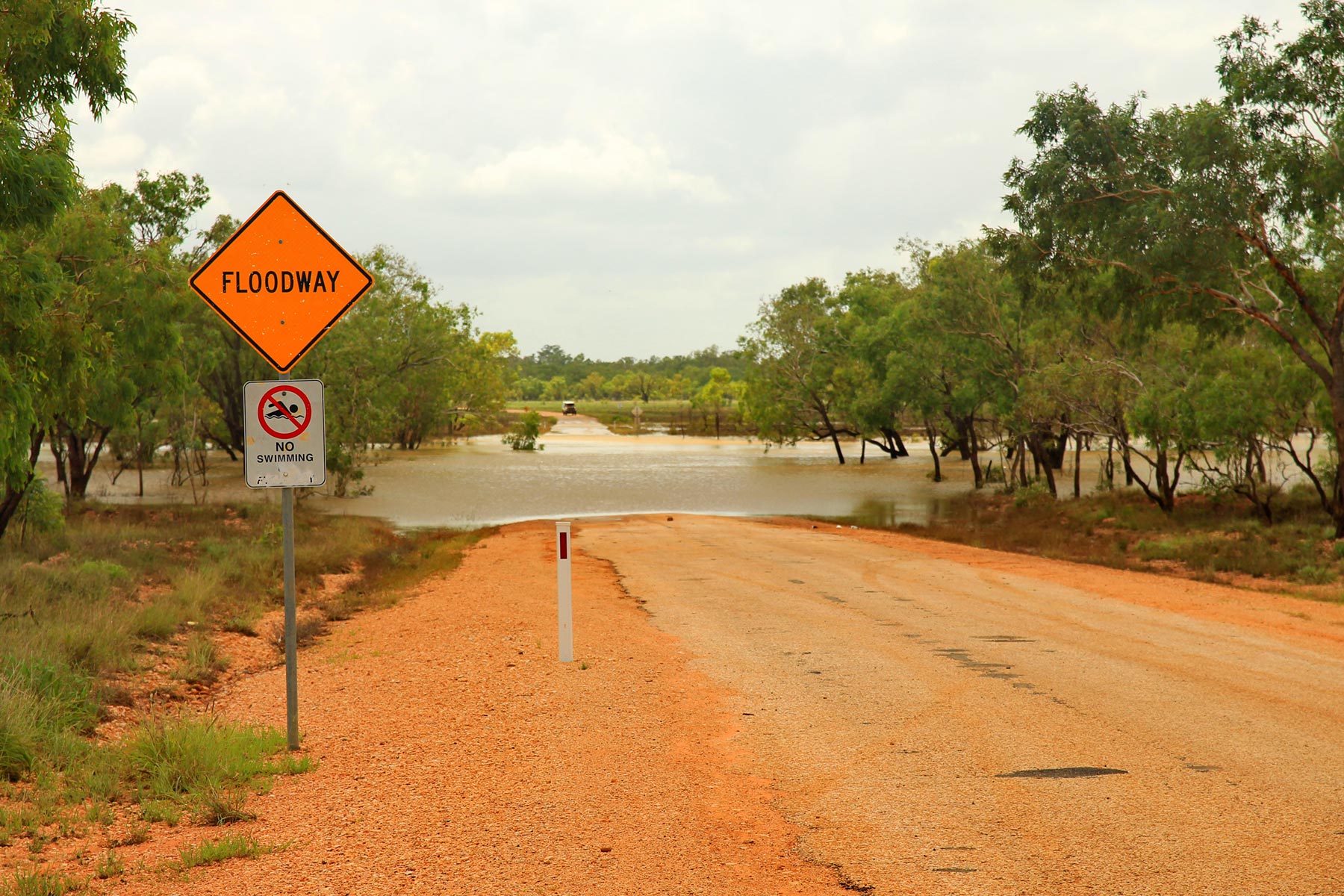
Floods in the Australian outback
Cape York and Far North Queensland
Cyclone Jasper wreaked havoc in Far North Queensland and was the wettest tropical cyclone in Australian history. Jasper made landfall as a category 2 tropical cyclone off the eastern coast of the Cape York Peninsula near Wujal Wujal on 13 December 2023, before weakening into an ex-tropical low and moving offshore.
During the height of Jasper rainfall peaked at 2252mm (88.7in) at Bairds near the Daintree River — the equivalent of two years’ rain in just one week. Flights in and out of Cairns were cancelled, residents in the coastal suburbs were rescued from the roofs of their homes and a man died in flood waters. The Insurance Council of Australia estimates the damage from Jasper at $1 billion.
Numerous roads were closed after the storm passed, including the Captain Cook Highway between Cairns and Port Douglas. There was significant damage to Cape Tribulation Road and the Bloomfield Track. Some temporary repairs have been put in place, but the extent of the damage means that permanent repairs will not be completed until the end of 2024.
Mareeba-based tour guide Brett Day, who has been conducting tours to Cape York for the past 15 years, said the Cape Tribulation Road is down to a single lane with waits at red lights up to 30 minutes.
The legendary Bloomfield Track — which wends its way through the heart of World Heritage-listed wet tropics rainforest with a visit to Bloomfield Falls, the community of Wujal Wujal and the famous Lion’s Den Hotel before reaching Cooktown — is closed and is unlikely to reopen this year.
While the dry season has not quite started in Far North Queensland, Brett said the monsoonal rains have passed and any rain remaining is coming from the south.
He said the road to Weipa was open and in good condition after being graded. The Batavia Road is currently closed but should reopen soon.
The Cook Shire Council lists the Bamaga Road as being open to high clearance four-wheel drive vehicles.
“No one has been up the Bamaga Road yet so we’re not sure about the conditions, but it’s very likely that the Pajinka Road from Bamaga up to the Tip will be closed for a few more weeks,” Brett said.
The Cook Shire Council provided an update on Cape York Peninsula road conditions on 30 April so head to the website for current information about all local roads.
There are numerous national park closures across Queensland from the Cape to the Gulf to the outback, so check the Department of Environment, Science and Innovation website for park alerts and current information.
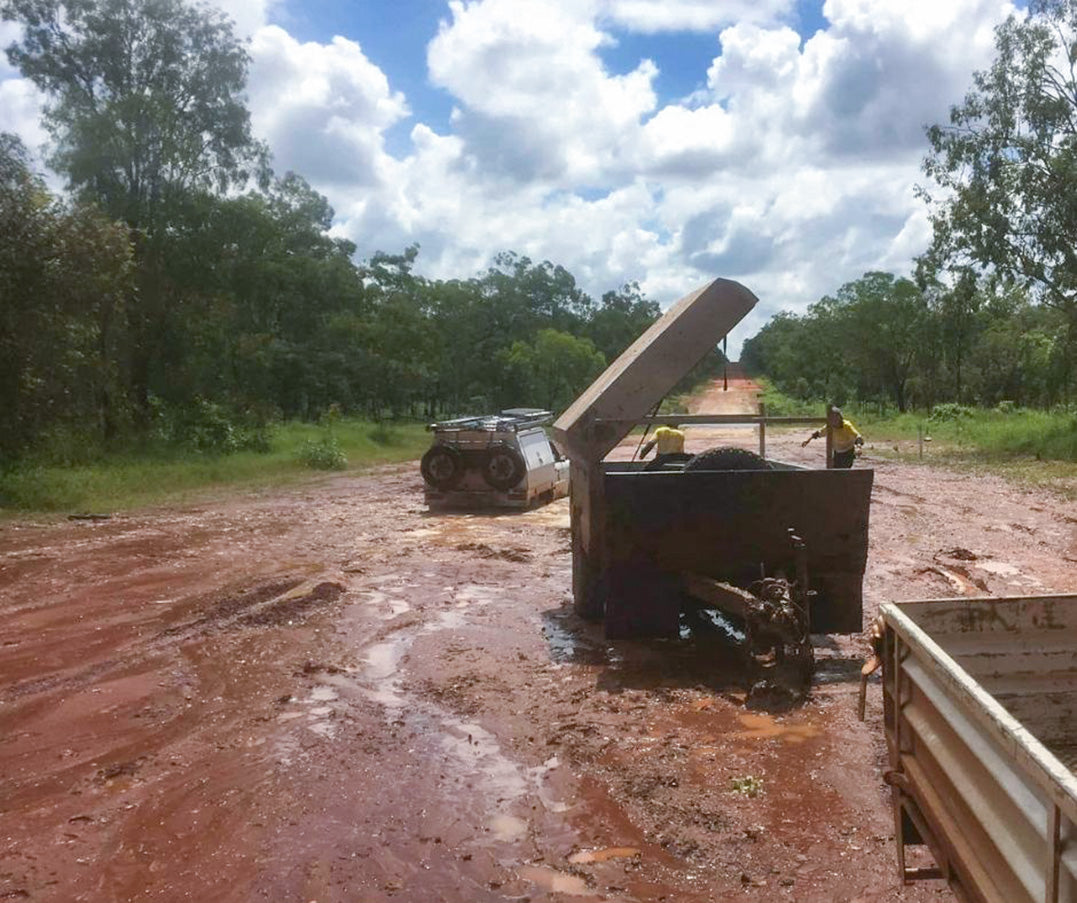
An example of road damage. Image credit: Cook Shire Council
Kimberley, WA
Sections of Gibb River Road now open
Repairs to essential infrastructure caused by flooding in the Kimberley means that the region is open for business and eagerly awaiting the arrival of hundreds of travellers who are currently propping in Broome and Kununurra waiting for the opening of the iconic Gibb River Road (GRR).
Main Roads WA has been working hard to get the Gibb open in time for the dry season and the section from the Imintji Community to the Kalumburu Road turnoff opened on 6 May. While the road is open, there is some pavement damage and extreme caution is advised. There are some high water crossings (700mm) so this should only be undertaken in high clearance four-wheel drive vehicles.
From Sunday 12 May, the section from the Kalumburu Road turnoff to the Pentecost River is due to reopen, again for high clearance 4WD vehicles and those vehicles weighing under 15T. The road has already opened from Lennard River to Mt Barnett and the Great Northern Highway is open.
Progress is subject to ongoing works and road conditions — it may be dependent on receding water levels at the Mt Barnett river crossing. Keep an eye on the Main Roads WA website for the latest information.
Tourist destinations along the GRR such as Ellenbrae Station and Birdwood Downs Station are preparing to open mid-May and welcome visitors. El Questro is open including El Questro Station, the Swinging Arm Bar, Amalia Gorge, Zebedee Springs, Chamberlain Gorge and Saddleback Lookout.
Major national parks in the Kimberley — which attract thousands of visitors each year — are set to reopen this week after the 2023 floods. Among the most popular are Bell and Windjana Gorges and Tunnel Creek which are looking lush and green. The Danggu Geikie Gorge National Park will remain closed in 2024 because of the severe damage to infrastructure and roads caused by the floods.
Outback Queensland and Northern Territory
Floodwaters from Ex-Tropical Cyclone Kirrily and heavy rainfall near Winton, Qld, resulted in water travelling hundreds of kilometres south through the Channel Country with a major flood passing through Birdsville on the Diamantina River — peaking at 7m — in February and cutting off access to the outback town for weeks.
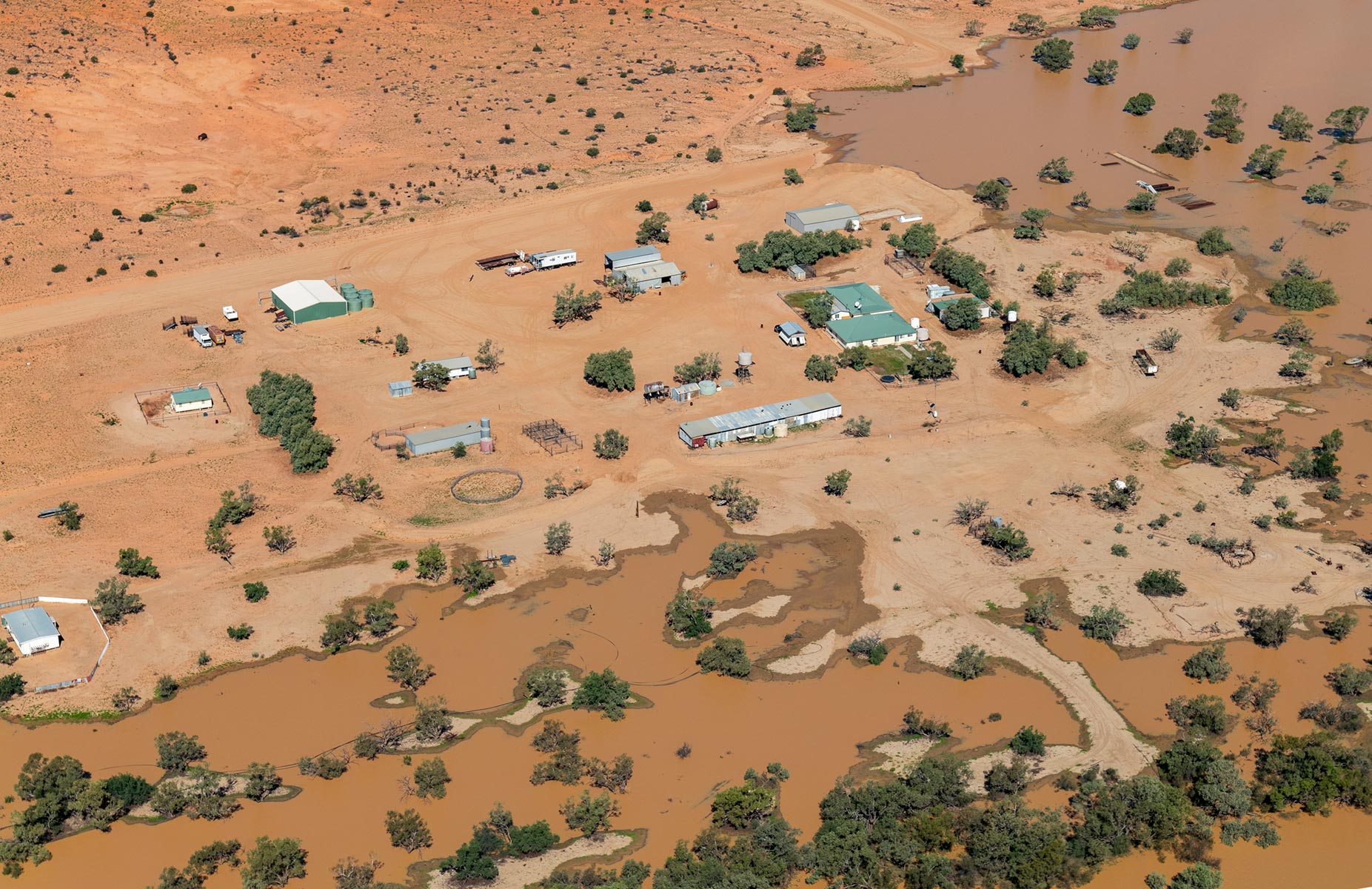
Floods in Birdsville
Floodwaters continued on to Kati Thanda-Lake Eyre Basin in South Australia, entering the lake and leaving a sea of rejuvenated green floodplain in its wake. A spectacle to witness from the air, tour operators such as Birdsville Aviation and Wrightsair Service are offering daily flights over both Goyder Lagoon and Lake Eyre.
Nearby Munga-Thirri National Park (Simpson Desert) is reopening after rainfall in the lead up to Easter.
Flooding from the Mulligan River is now flowing into Eyre Creek and was expected to impact the QAA line by Friday 3 May 2024. Access to Birdsville will be via the bypass track north from the QAA line. The flood bypass is expected to remain accessible, and signage is currently being put into place.
For up-to-date information keep an eye on the Queensland Government’s parks and forests website.
Check road conditions
While authorities and local governments typically monitor road conditions throughout the year and issue warnings or advisories, travellers planning to visit northern Australia, especially remote areas, should do their own homework and check road conditions and the weather forecast before setting off on their journey.
Importantly, be prepared for changing conditions. Make sure you have the appropriate vehicles, supplies and emergency plans in place, especially when travelling in more isolated regions.
Staying informed
There are many ways to get information about closures and other road conditions while you’re travelling.
Local radio stations and news outlets — such as the ABC in rural areas — often broadcast updates on road closures, flood warnings and travel conditions, especially during severe weather events. Tuning in to local radio stations or checking news websites and social media channels can provide timely information.
Local councils in rural areas are often responsible for the maintenance of local roads and their websites and social media pages will have information about road closures, roadworks and alternate routes.
State Government transport departments or road authorities provide up-to-date information on main roads that fall in their jurisdiction via websites, social media channels or through dedicated hotlines.
Smartphone apps
There are several smartphone apps available that provide real-time updates on regular and extreme weather conditions including the Bureau of Meteorology (BOM) and Weatherzone.
The Northern Territory Government has developed its own app for travellers to get real-time information about road closures and conditions. The Road Report NT mobile app for both Apple and Android phones can be downloaded from the App Store or wherever you get your apps.
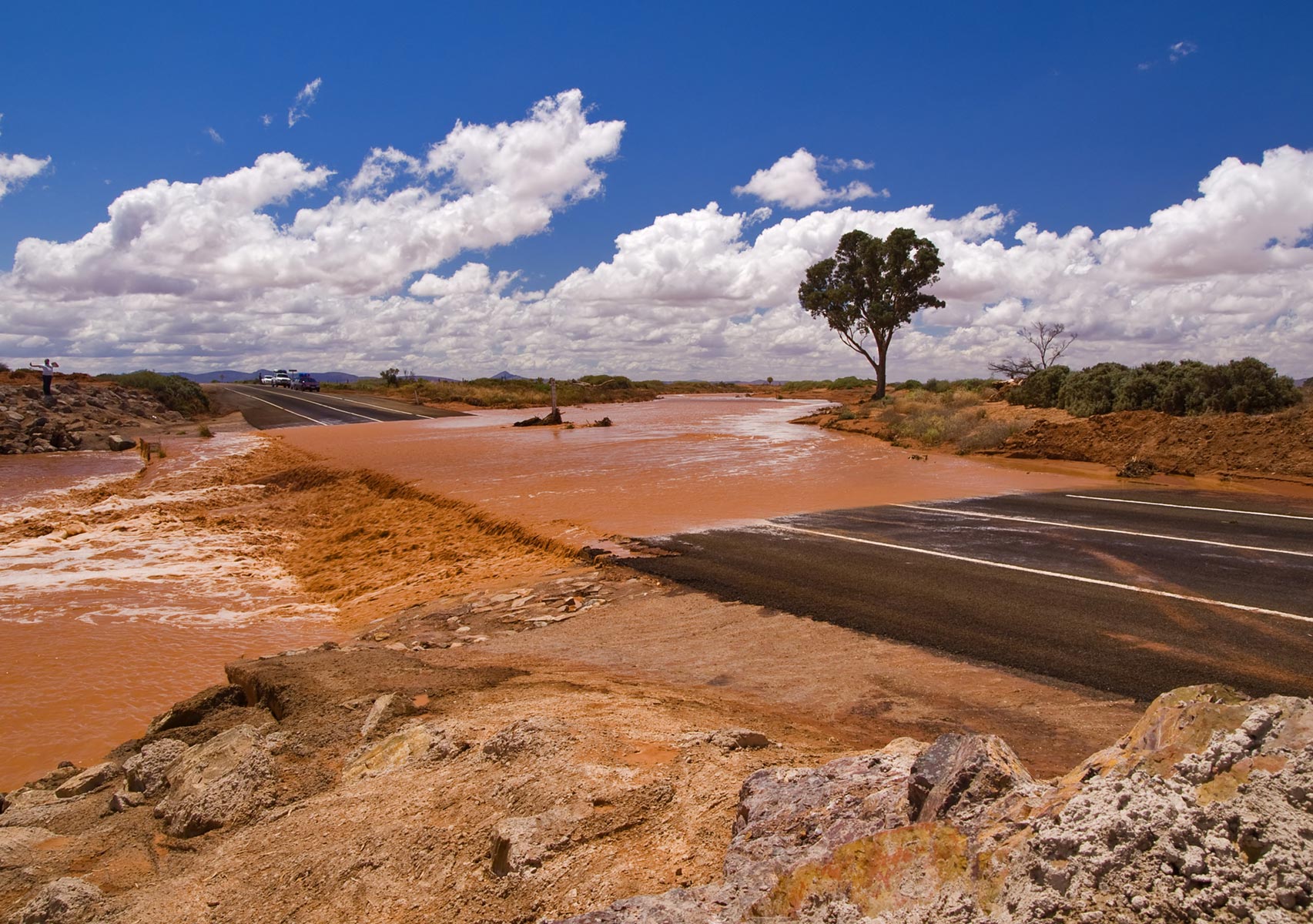
Floodway in South Australia
Online maps and navigation apps
There have been an alarming number of instances in recent times of travellers becoming lost in the outback because they have used Google or other online applications as navigation tools.
If you are planning to travel into remote areas of Australia, a reliable navigation system such as the Hema HX-2+ GPS Navigator is essential. Leveraging the iconic Hema Maps and remote guidance powered by HemaX Digital, the HX-2+ GPS Navigator includes 150,000 point of interest (POI) listings such as camping sites, caravan parks, hotels, motels, rest areas, boat ramps, fuel stops, tourist spots, post offices and more.
Visitor information centres
Visitor information centres in popular destinations may also have information on road closures and travel advisories. If they don’t have the information, they will certainly be able to direct you to the correct source of information. Most visitor information centres have very comprehensive websites for further information.
Road signs and notices
Authorities typically post signage along major highways and roads to alert travellers to closures, detours or other hazards. Paying attention to road signs and notices while travelling can help avoid unexpected delays or disruptions. Entering a road that is marked as closed can incur a steep fine in some states.
Travellers should remain vigilant and flexible when travelling during the wet season in northern Australia, as road conditions can change rapidly due to weather events. It’s essential to stay informed, heed warnings and advisories from authorities, and adjust travel plans accordingly to ensure safety.
Handy telephone numbers
- SA Government: 1300 361 033 (Automated Service)
- Qld Traffic: 13 19 40
- Main Roads WA: 138 138
- Road Report NT: 1800 246 199
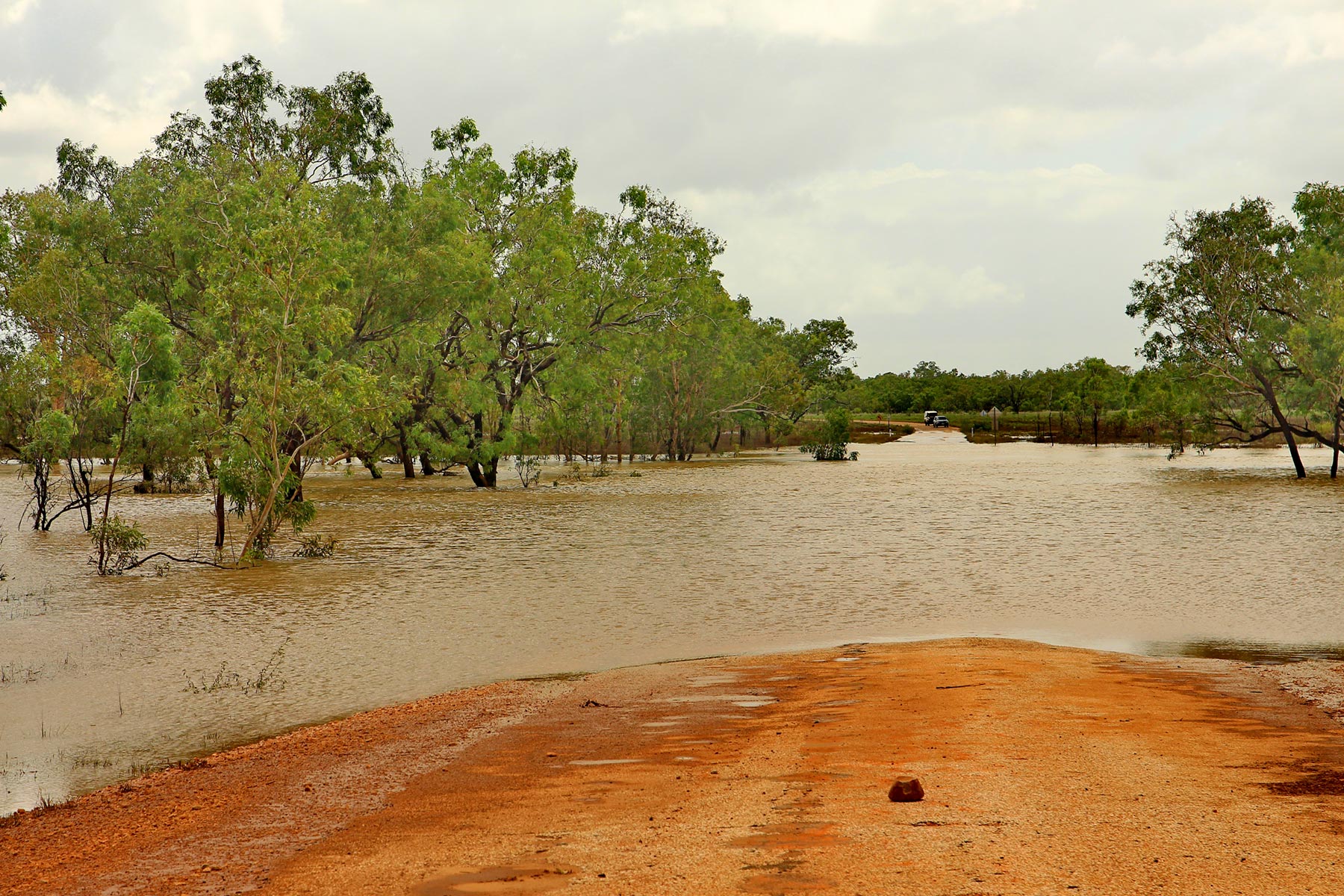
Floods in the Australian outback
Next steps
At Hema Maps, we strive to provide the most comprehensive and accurate maps and guides for outdoor enthusiasts looking to explore Australia's natural wonders.
Did you find this information useful? If so, please share it with your fellow explorers. Whether it's by SMS, social media, or email, your friends and fellow adventurers will appreciate the valuable tips and insights we've shared.
Let's work together to make the most of every adventure.
1 comment









We are at Cairns at present and have just returned from driving to the Cape York tip in a AWD Hyundai Santafe hi track we made to with 7 km from the tip road from Bramwell roadhouse had 3 bad washouts first 1 was 8km north this one you had to leave the road and go into gutter, 2nd about 30km north half road washed out and 3rd around fruit bat falls, again half road washout. The last 7km to the tip was dodgy and we went back to Bamaga and hired a 4wd to get there and present the road from Hann River roadhouse is smooth and easy travelling